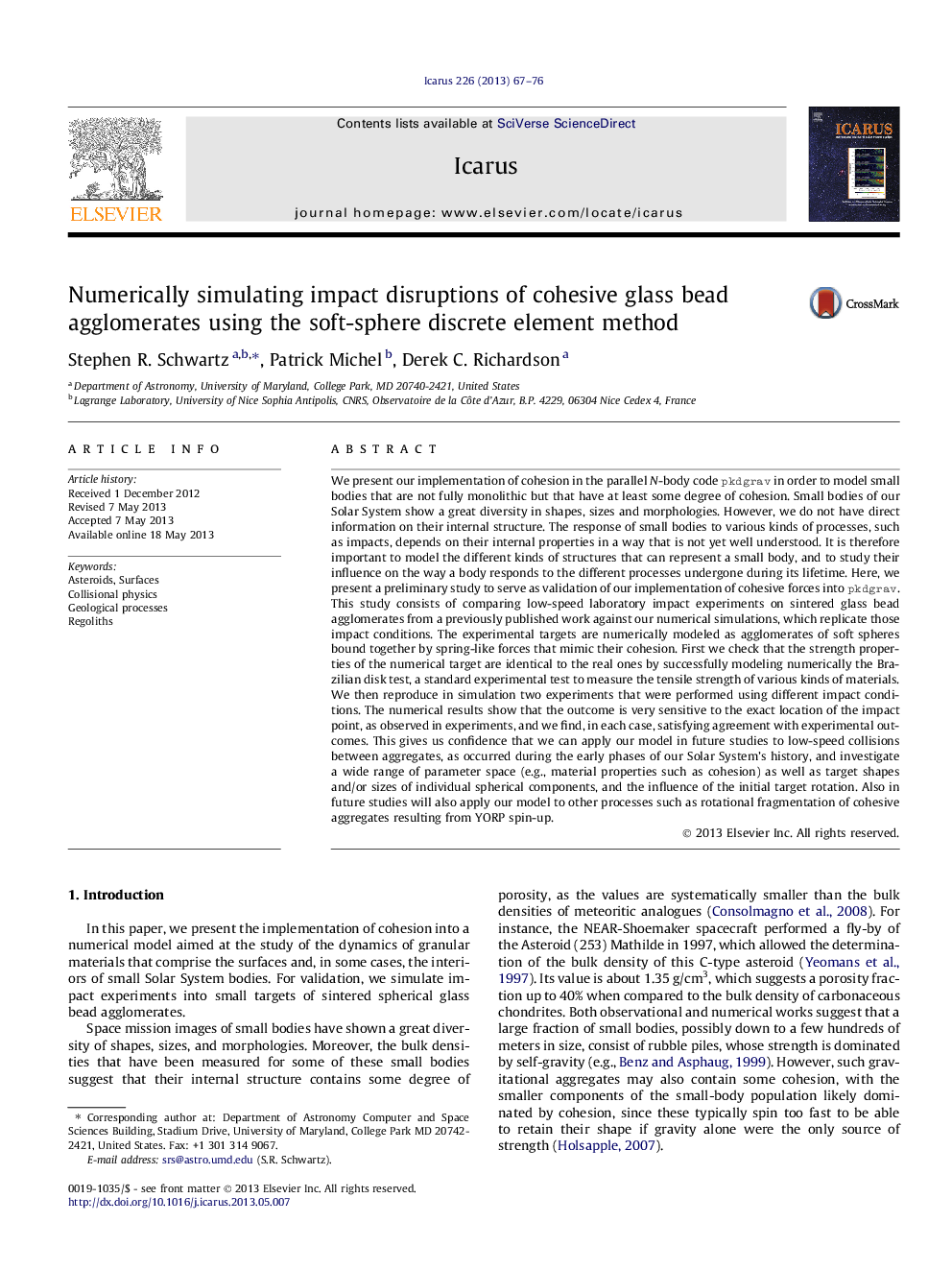| کد مقاله | کد نشریه | سال انتشار | مقاله انگلیسی | نسخه تمام متن |
|---|---|---|---|---|
| 10701283 | 1021128 | 2013 | 10 صفحه PDF | دانلود رایگان |
عنوان انگلیسی مقاله ISI
Numerically simulating impact disruptions of cohesive glass bead agglomerates using the soft-sphere discrete element method
ترجمه فارسی عنوان
عددی شبیه سازی اختلالات ضربه ای از آگلومره های مهره ای یکپارچه با استفاده از روش عنصر دیجیتالی نرم فضا
دانلود مقاله + سفارش ترجمه
دانلود مقاله ISI انگلیسی
رایگان برای ایرانیان
کلمات کلیدی
موضوعات مرتبط
مهندسی و علوم پایه
علوم زمین و سیارات
علوم فضا و نجوم
چکیده انگلیسی
We present our implementation of cohesion in the parallel N-body code pkdgrav in order to model small bodies that are not fully monolithic but that have at least some degree of cohesion. Small bodies of our Solar System show a great diversity in shapes, sizes and morphologies. However, we do not have direct information on their internal structure. The response of small bodies to various kinds of processes, such as impacts, depends on their internal properties in a way that is not yet well understood. It is therefore important to model the different kinds of structures that can represent a small body, and to study their influence on the way a body responds to the different processes undergone during its lifetime. Here, we present a preliminary study to serve as validation of our implementation of cohesive forces into pkdgrav. This study consists of comparing low-speed laboratory impact experiments on sintered glass bead agglomerates from a previously published work against our numerical simulations, which replicate those impact conditions. The experimental targets are numerically modeled as agglomerates of soft spheres bound together by spring-like forces that mimic their cohesion. First we check that the strength properties of the numerical target are identical to the real ones by successfully modeling numerically the Brazilian disk test, a standard experimental test to measure the tensile strength of various kinds of materials. We then reproduce in simulation two experiments that were performed using different impact conditions. The numerical results show that the outcome is very sensitive to the exact location of the impact point, as observed in experiments, and we find, in each case, satisfying agreement with experimental outcomes. This gives us confidence that we can apply our model in future studies to low-speed collisions between aggregates, as occurred during the early phases of our Solar System's history, and investigate a wide range of parameter space (e.g., material properties such as cohesion) as well as target shapes and/or sizes of individual spherical components, and the influence of the initial target rotation. Also in future studies will also apply our model to other processes such as rotational fragmentation of cohesive aggregates resulting from YORP spin-up.
ناشر
Database: Elsevier - ScienceDirect (ساینس دایرکت)
Journal: Icarus - Volume 226, Issue 1, SeptemberâOctober 2013, Pages 67-76
Journal: Icarus - Volume 226, Issue 1, SeptemberâOctober 2013, Pages 67-76
نویسندگان
Stephen R. Schwartz, Patrick Michel, Derek C. Richardson,
